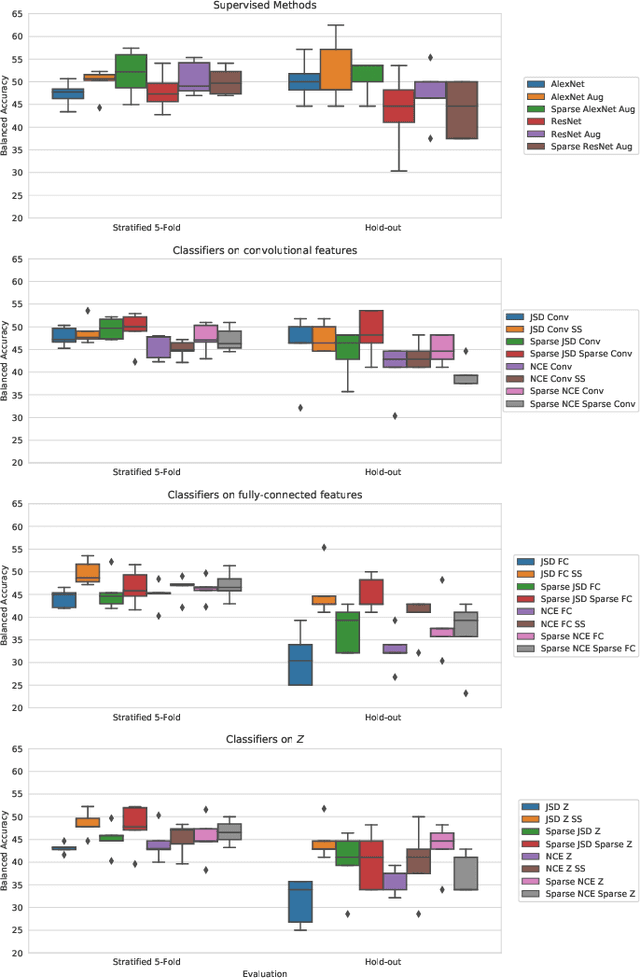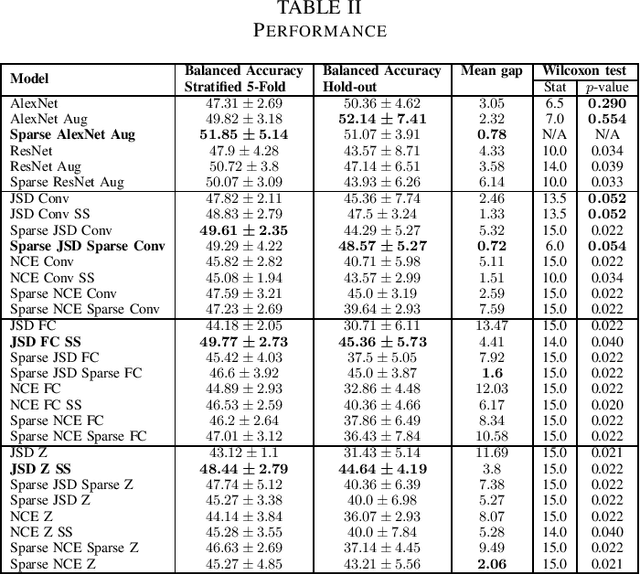Yuhui Du
Cepstral Analysis Based Artifact Detection, Recognition and Removal for Prefrontal EEG
Apr 12, 2024Abstract:This paper proposes to use cepstrum for artifact detection, recognition and removal in prefrontal EEG. This work focuses on the artifact caused by eye movement. A database containing artifact-free EEG and eye movement contaminated EEG from different subjects is established. A cepstral analysis-based feature extraction with support vector machine (SVM) based classifier is designed to identify the artifacts from the target EEG signals. The proposed method achieves an accuracy of 99.62% on the artifact detection task and a 82.79% accuracy on the 6-category eye movement classification task. A statistical value-based artifact removal method is proposed and evaluated on a public EEG database, where an accuracy improvement of 3.46% is obtained on the 3-category emotion classification task. In order to make a confident decision of each 5s EEG segment, the algorithm requires only 0.66M multiplication operations. Compared to the state-of-the-art approaches in artifact detection and removal, the proposed method features higher detection accuracy and lower computational cost, which makes it a more suitable solution to be integrated into a real-time and artifact robust Brain-Machine Interface (BMI).
* 5 pages, 4 figures, published by TCAS-II
Prediction of Progression to Alzheimer's disease with Deep InfoMax
May 01, 2019

Abstract:Arguably, unsupervised learning plays a crucial role in the majority of algorithms for processing brain imaging. A recently introduced unsupervised approach Deep InfoMax (DIM) is a promising tool for exploring brain structure in a flexible non-linear way. In this paper, we investigate the use of variants of DIM in a setting of progression to Alzheimer's disease in comparison with supervised AlexNet and ResNet inspired convolutional neural networks. As a benchmark, we use a classification task between four groups: patients with stable, and progressive mild cognitive impairment (MCI), with Alzheimer's disease, and healthy controls. Our dataset is comprised of 828 subjects from the Alzheimer's Disease Neuroimaging Initiative (ADNI) database. Our experiments highlight encouraging evidence of the high potential utility of DIM in future neuroimaging studies.
 Add to Chrome
Add to Chrome Add to Firefox
Add to Firefox Add to Edge
Add to Edge